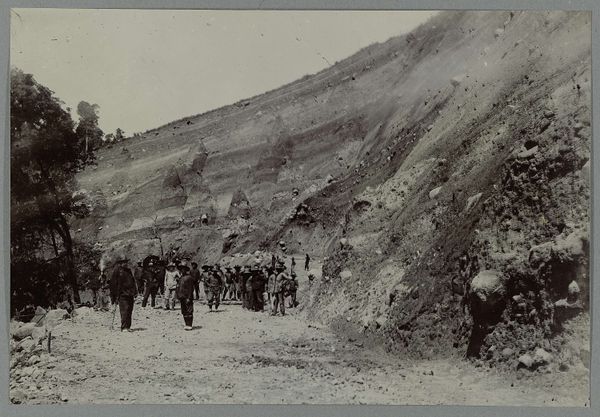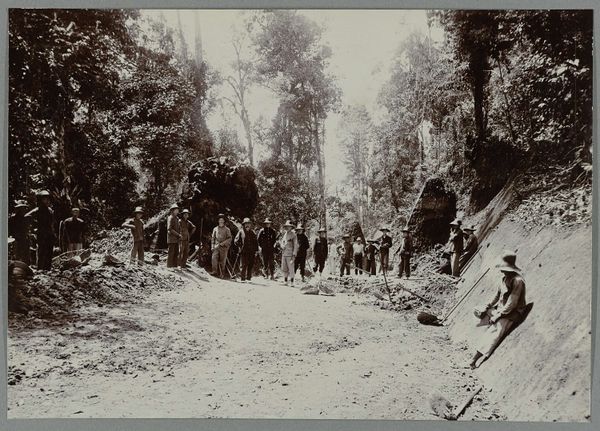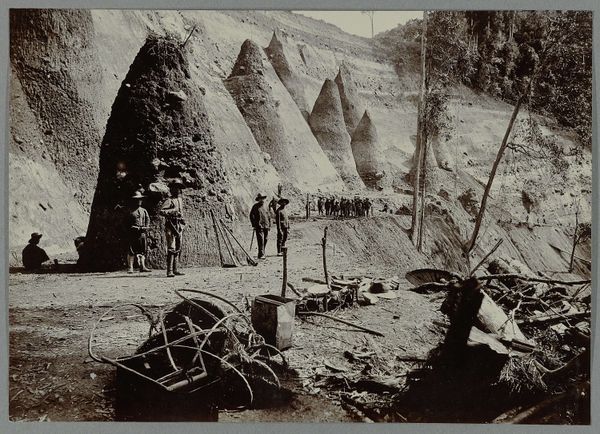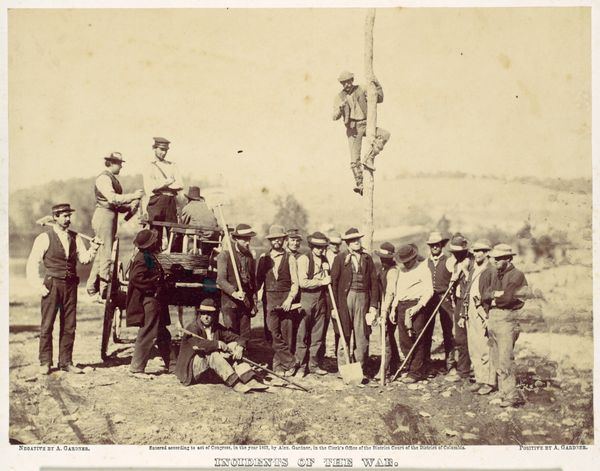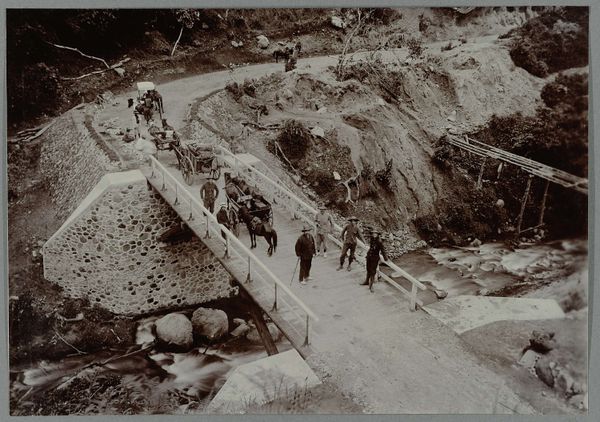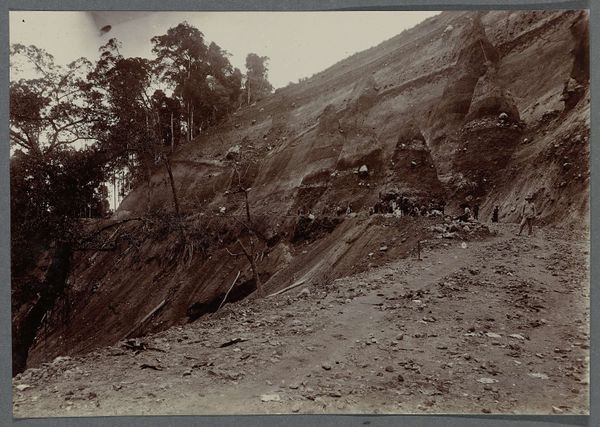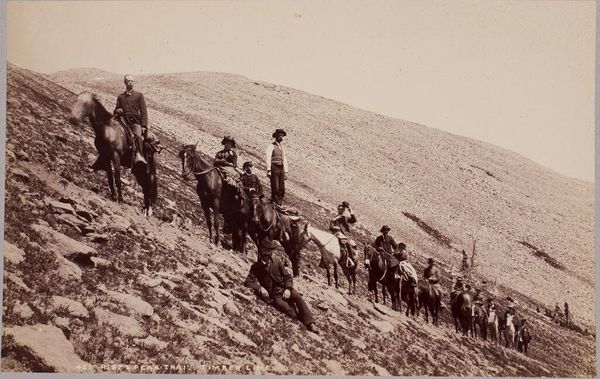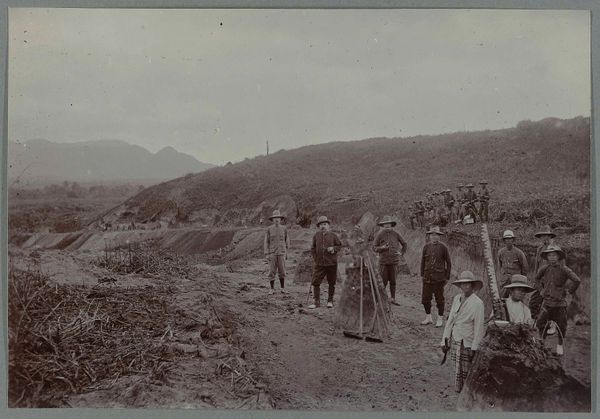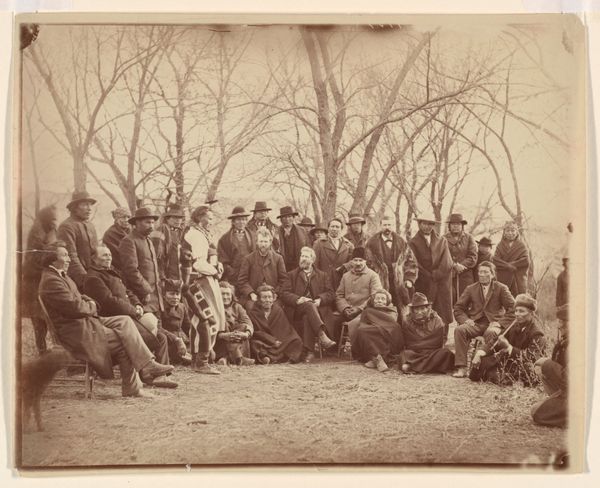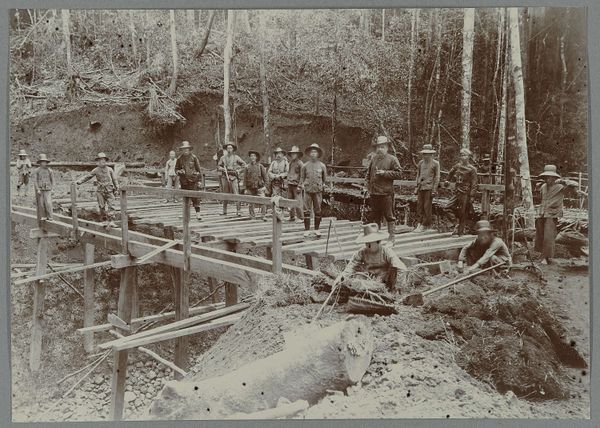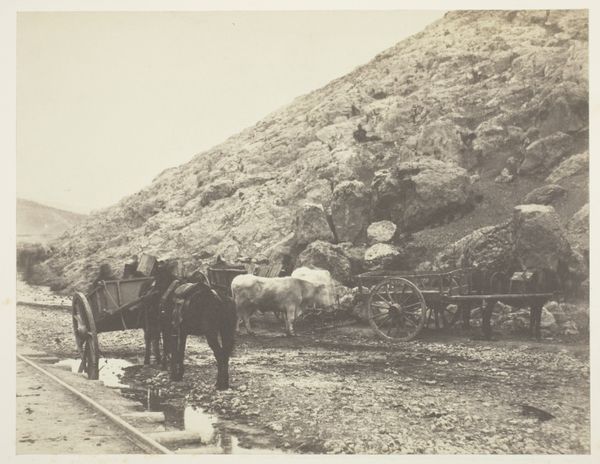
photography, gelatin-silver-print
#
portrait
#
landscape
#
photography
#
orientalism
#
gelatin-silver-print
#
realism
Dimensions: height 78 mm, width 101 mm
Copyright: Rijks Museum: Open Domain
Editor: This gelatin-silver print, “Soldiers on the Gayo Road,” believed to have been created between 1910 and 1913 by an anonymous photographer, depicts a group of soldiers along a hillside road. There is a strong sense of determination here; they’re facing us head-on. What historical narrative can we weave around this striking image? Curator: The symbols here offer much to consider. The hats worn by the soldiers, the type of weaponry they carry, and even the landscape itself are imbued with meaning related to colonial power and cultural identity. Note the way they are arranged on the road, posing—almost self-consciously—for the camera. Editor: They certainly seem aware of being photographed. Curator: Indeed. What do you think that consciousness conveys about their perception of themselves and their place in that historical moment? Perhaps that seemingly minor detail of 'awareness' shifts the whole scene toward something else, creating an alternate interpretation? Consider that their weaponry is displayed openly. It conveys not only strength but, depending on their interactions with locals, hints at dominance or potential intimidation. The very act of documenting their presence here becomes a statement. Editor: I see what you mean. The photo seems less like a simple portrait and more like an assertion of authority. Knowing that, how does it make you view the relationship between the photographer and the photographed? Curator: Exactly! A photograph like this is never neutral. It reveals a complex power dynamic—who is doing the seeing, who is being seen, and for what purpose? Reflect on the gaze that constructed this image, its original intended audience, and how that context shapes our interpretation today. Editor: It definitely reframes the photograph to consider not only what's in the image, but why, and for whom it was taken. I hadn't considered the implications of their direct gaze previously. Curator: The image persists because the photograph—due to how its symbolism continues to be perceived over time—opens itself to interpretations around colonization and identity.
Comments
No comments
Be the first to comment and join the conversation on the ultimate creative platform.
